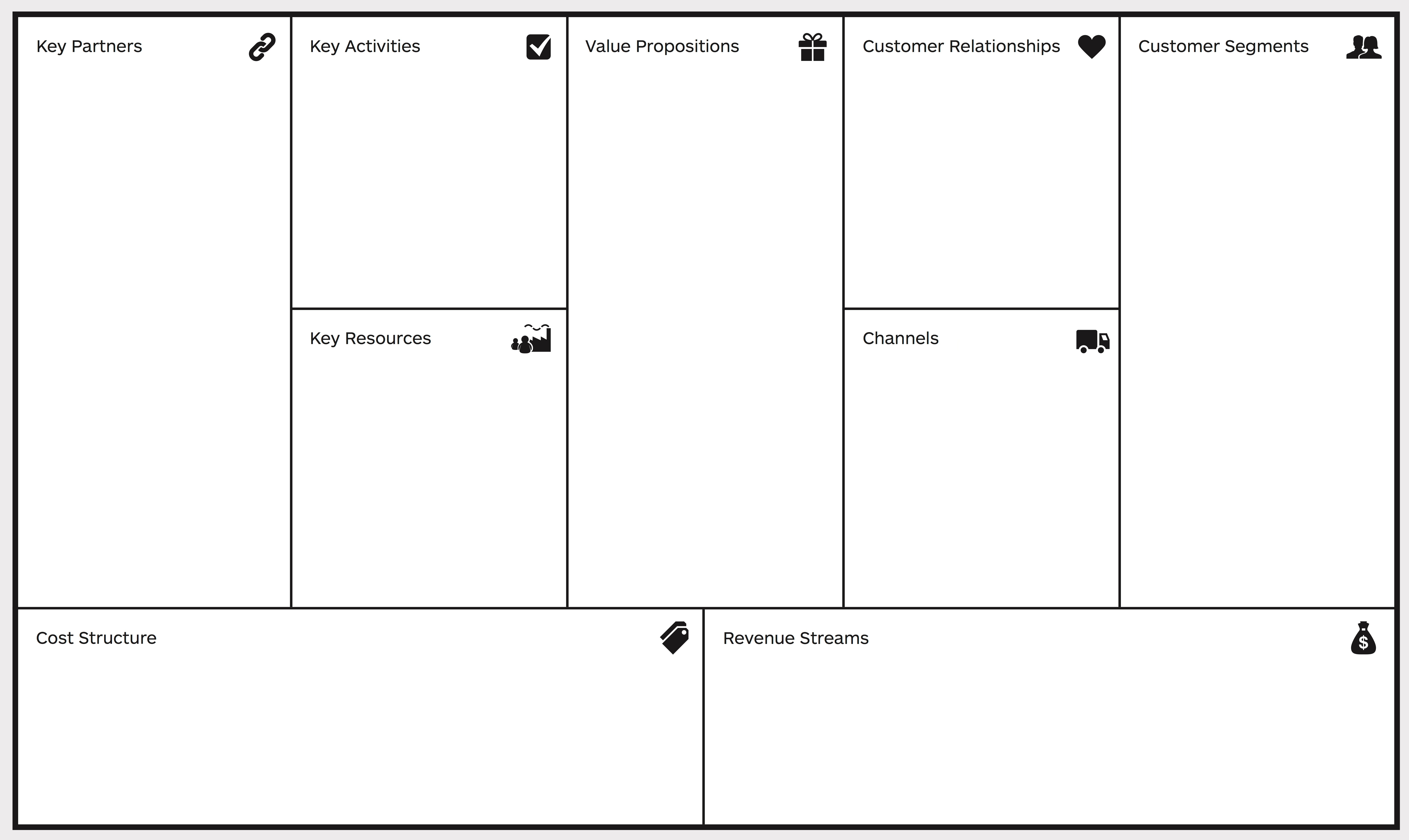
When starting a new business, it's (obviously!) important to have a plan. A full business plan takes a lot of time and work to create, but you don't always have the time or resources to complete a full business plan before deciding whether to launch your business. This is where the business model canvas comes in. The business model canvas will help you plan the most important parts of your ecommerce business on just one sheet of paper. If you're looking for a more thorough business plan model, check out our template for a full ecommerce business plan.
The Business Model Canvas was originally proposed by Alexander Osterwalder, and it was refined with the help of over 400 entrepreneurs in 45 countries. It incorporates nine key building blocks of business into a one-page layout, so you can see all of the important information in one place and make changes as you learn and grow. It's great for entrepreneurs who want to get started planning their business without having to spend the weeks (or months) that it can take to create a full business plan.
The image below is the layout for the Business Model Canvas and can be created on a single sheet of paper, whiteboard or chalkboard. The most important part is that you understand the nine different sections and how to fill them out for your business.

Business Plan Canvas
The ecommerce business model canvas will focus on identifying nine key aspects of your business:- Value Proposition
- Customer Segments
- Channels
- Customer Relationships
- Revenue Streams
- Key Resources
- Key Partners
- Key Activities
- Cost Structures
Each of these elements is critical when planning an ecommerce business. One of the biggest mistakes most ecommerce merchants make is opening their store without a solid business plan. The business model canvas will help you get a leg up on the competition, and help you make sure that you're making strategic decisions about your business from the get-go.
Value Propositions
Your value proposition is the heart of the business model canvas. It's the single most important part because it's why customers will be attracted to your business and choose to spend money with you.
Think about what makes you unique and how you will cater specifically to your ideal customer segments. What product or service will you offer? What problem does you business solve and why is it important to potential customers?
Customer Segments
These are the details about who your customers are, including their demographics and psychographics. Include your niche customer segments and your broad target market if you have one.
If you plan to tap into multiple segments, this part of the business model canvas can include multiple different groups of people. You should include the different products and services you will offer to each unique customer segment.
Remember to measure and report over time to determine which channels are the most effective.
Channels
Channels are the methods you will use to get the word out about your value proposition to your customer segments. Some examples of common channels are social media, word of mouth, signs and posters, events, phone calls, etc.
How will you reach new potential customers, and which channels are most cost effective? Remember to measure and report over time to determine which channels are the most effective.
Customer Relationships
There are a lot of different business models out there, and many utilize different customer relationships. If you sell things exclusively online you may never see or talk to your customers, but if you have a physical storefront you will interact and communicate with your customers face to face more often. This section of the ecommerce business model canvas is used to define your ideal customer interactions and relationships you would like to cultivate.
How will you interact with your customers? For each different customer segment what type of relationship do they want or expect from your type of business?
Revenue Streams
This is a fun one: here's how you actually get paid. How do customers pay, and what systems do they use to get cash from their pocket to your account? Think about how much you can charge and still keep customers happy and coming back for more. If you have multiple streams, add up all of them to see your total revenue.
Key Resources
There are many different types of resources you may utilize including physical materials, intellectual property, software products, human capital, etc. Start by looking at your value propositions and customer relationships and figure out what all you need to deliver on those items adequately.
Key Partners
Your key partners are companies or individuals that you will work with to deliver value to your customer segments. Which key resources will you acquire from partners? Which key activities will partners perform?
Key Activities
This includes the actual day-to-day work that will need to be done to run your business. What do you have to do to deliver your value proposition? Look at your value propositions, customer relationships, revenue streams and distribution channels and figure out what you or an employee will have to do to make sure all of those things run smoothly.
Cost Structure
How much will your key resources and key activities cost? Are those costs fixed or variable? This section can get very long, but it's important to understand 100% of all your costs so that you can plan accordingly. You need to know exactly how much cash will be required to run your business and how much minimum revenue you need to have coming in every week or month to keep your doors open.
This section can get very long, but it's important to understand 100% of all your costs so that you can plan accordingly.
Creating a business model canvas for your own ecommerce store
If you take the time to plan out all nine sections of the business model canvas before jumping into a new business idea, you'll be much more prepared than the majority of your competitors. The goal of this canvas is to create some level of strategy for your business without taking too much time. Taking the time to complete your canvas will actually allow you to launch your business faster so you can learn what works (and what doesn’t) and make changes to your canvas. This is a live document that is always changing and evolving. Just don’t forget to come back and update it once you're a successful business owner!
Have any suggestions for building a business model canvas for your own ecommerce business? Leave them in the comments!











